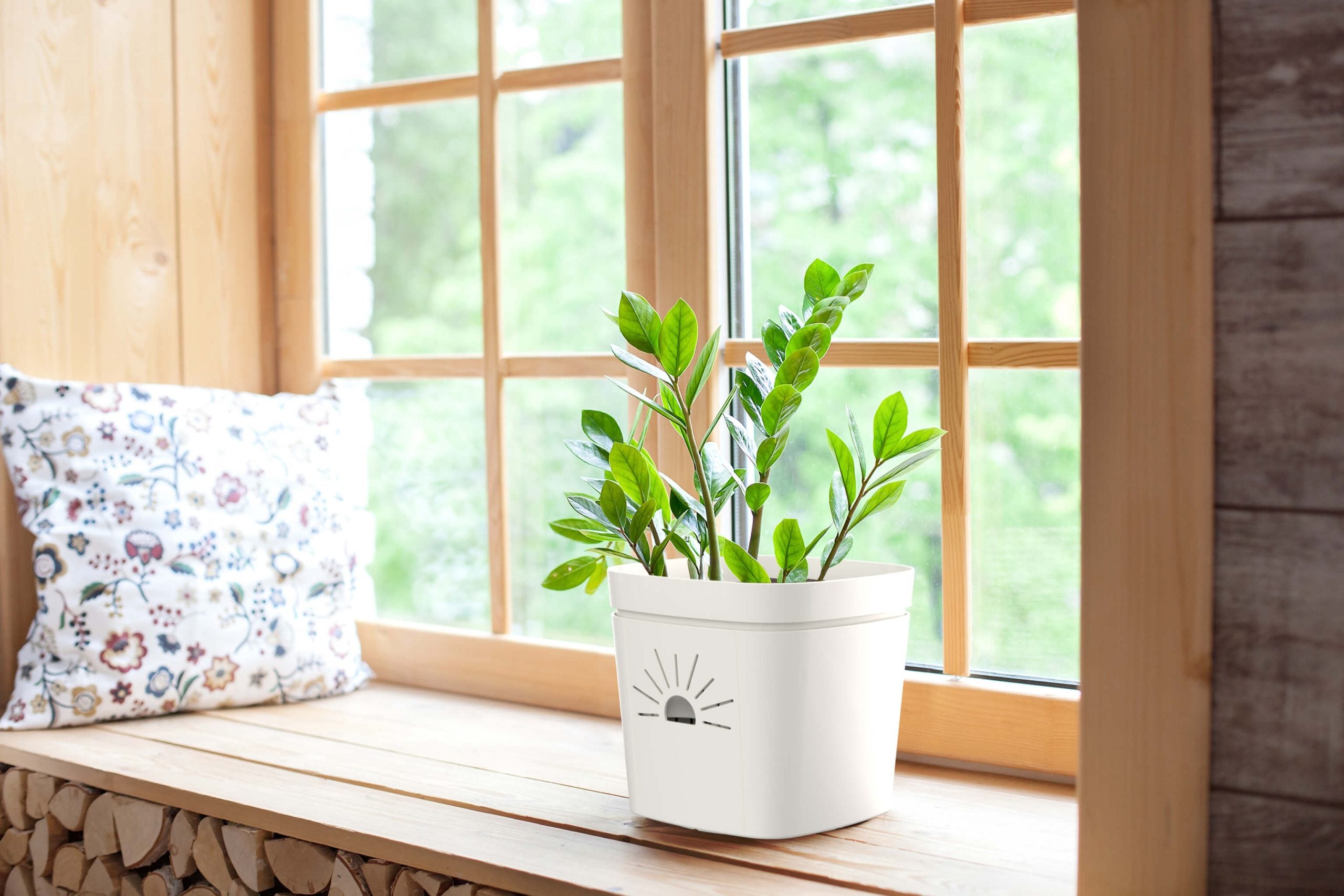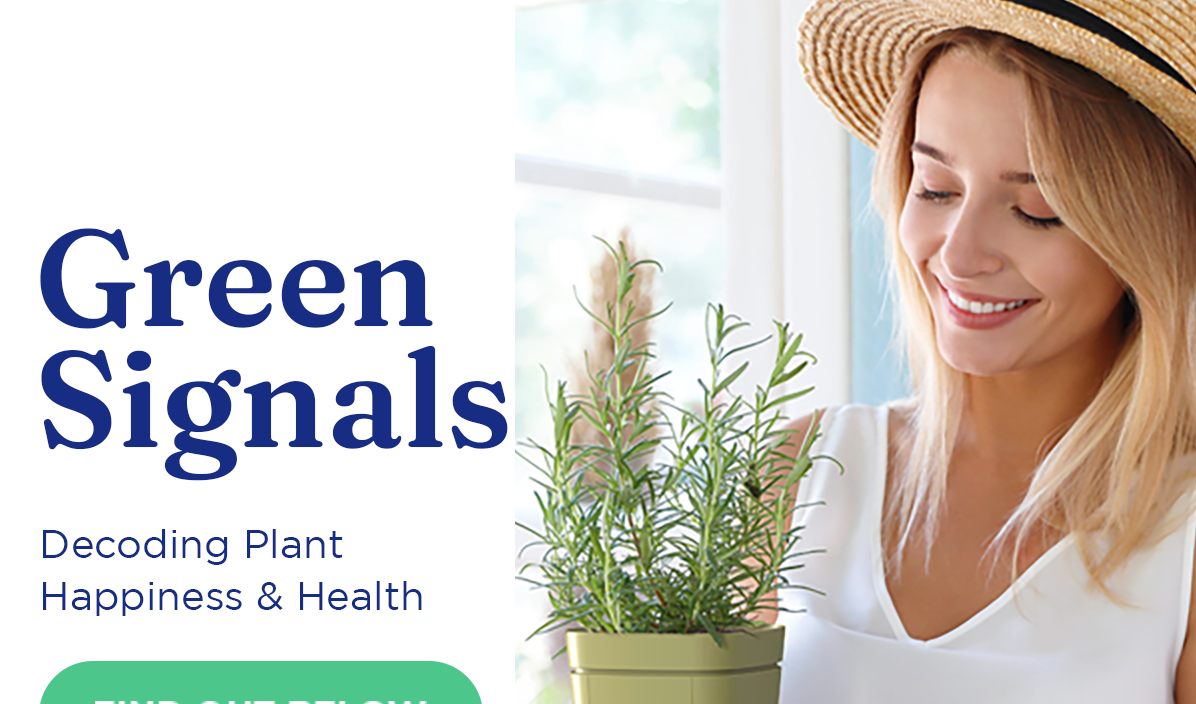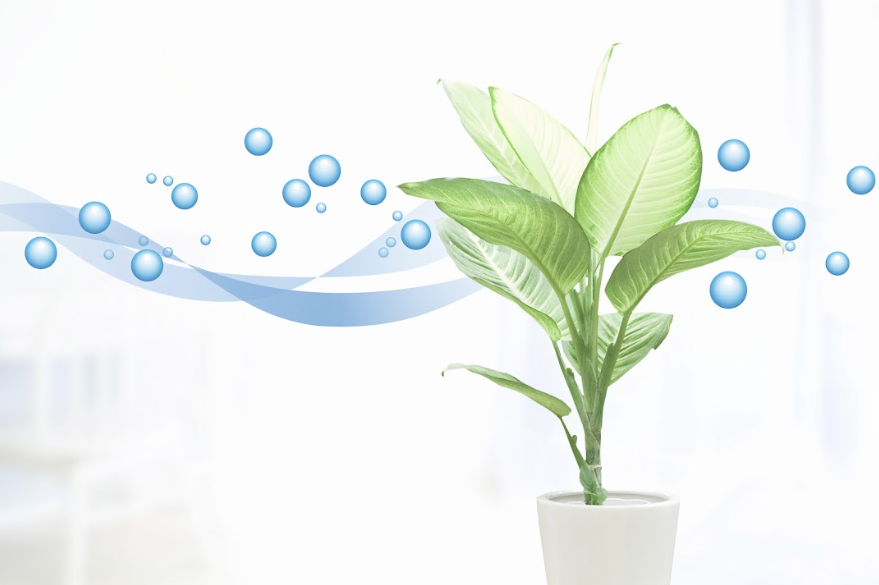Origins
Peperomia is a genus within the family of Piperaceae (pepper). It is estimated that there are more than 1,000 species worldwide, mainly in northern South America, Central America, Africa, southern Asia, and Oceania. As new species continue to be discovered, the exact number of Peperomia species is hard to determine. These plants have adapted to many different habitats and feature a wide variety of appearances. Some are epiphytes or lithophytes, while others are xerophytes with thick succulent structures or geophytes with underground tubers. Most Peperomia species are compact perennial shrubs or vines.
The scientific name of the Peperomia genus was created by Spanish botanists Ruiz López and Pavón Jiménez in 1794 after their expeditions in Peru and Chile. Although some people call them radiator plants, presumably because they prefer dry and bright spaces similar to the windowsill above a radiator, no universal name is accepted for them. Peperomia species are found in tropical and subtropical regions around the world. The exact amount may differ as new plants are discovered, and plants with different names but the same species are identified.
Light
Requirements
As a general rule, bright indirect light is best for peperomia plants. Peperomia plants that come from rainforest or jungle environments usually do not need much light. For the best results, give them indirect lighting and rotate the plants to promote even growth. Varieties with smaller leaves can handle the lowest light conditions, while those with larger leaves need medium light. Too much direct sunlight may cause the leaves to burn or be damaged.
Genus Summary
| GENUS | Peperomia |
| COMMON NAMES | Radiator plant, Baby rubber tree. |
| LIGHT | Bright, indirect light |
| WATER SCHEDULE | Naked Root = 21 Days |
| WATER REQUIREMENTS | Conventional planter, allow the soil to dry 2 inches before watering. |
| HUMIDITY | High humidity over 50 percent |
| TEMPERATURE | 60-80°F |
| FEEDING | 1x month |
| TOXICITY | The varieties grown as houseplants are non-toxic to animals and humans. |
| PESTS | Fungus gnats, spider mites, and whiteflies |
| DISEASES | Phytophthora stem & leaf rot, Pythium root rot, and Sclerotium stem rot. Cucumber mosaic virus and ring spot virus |
| POT | Ideal candidate for Naked Root planter |
| SOIL | Well-draining succulent mix |
| FERTILIZER | Diluted 3-1-2 (applied from the bottom) once per month in spring/summer |
| PROPAGATION | Leaf or stem cuttings |
| PRUNING | Pinch to encourage bushier growth |
| SIZE | 12 to 18 inches |
Water Requirements
For gardeners using a Naked Root planter, follow a 21-day watering schedule.
Peperomia plants grow best in humid environments and require very little water. Water them from the bottom and let the soil dry out before watering again. Generally, more water should be given during the spring and summer months and less in the winter. Too little water will cause the leaves to curl up and brown, while too much will make them brown and mushy. Adding mulch to the soil can help retain moisture and show off the beautiful foliage.
Humidity
To ensure your peperomia plants thrive, keep the environment around them humid. Peperomias absorb water through their leaves, so keeping the humidity at a minimum of 50% is ideal for them. Higher levels of humidity are even better, though! If you’re having trouble maintaining that level in your home, try placing them in a terrarium or bathroom where there’s naturally more moisture and warmth. Additionally, consider misting your peperomia plants with distilled water to give them an extra boost of hydration.
Temperature
Peperomia plants prefer warm temperatures and should not be exposed to cold drafts or temperatures below 60°F. If the outdoor temperature drops too low, it is best to bring your peperomia indoors. Keep them away from windows that may let in a draft of cold air, and do not place them outdoors if there is any chance of frost.
Peperomia can suffer damage if exposed to freezing temperatures, so it is important to check local forecasts before bringing your plant outside. Provide plenty of light while indoors, and make sure that the indoor temperature stays within the desired range. Coming too close to 80°F can also cause stress for your peperomia plant, so keep an eye on thermometers throughout both winter and summer months!
Toxicity
The varieties of peperomia that are most commonly grown as indoor houseplants are non-toxic to humans and animals. Though peperomia plants are generally considered to be safe, there is still a chance for toxicity. If you have children or pets in your home, it’s best to double-check that the species of peperomia you plan on growing is non-toxic.
If you’re unsure about the safety of a particular plant, seek out expert advice from a local nursery or veterinarian. When handling any type of plant, it’s also important to use caution and wear gloves if possible – this will minimize the risk of any skin irritation caused by contact with sap or other irritants present in certain plants.
Pests and Diseases
Peperomia plants can be affected by a range of pests when grown indoors and outdoors. Fungus gnats, spider mites, and whiteflies are the most common. These thrive in dry conditions, so it’s important to keep the humidity up around your plant, as this will help reduce their numbers or even eliminate them altogether. Additionally, avoid underwatering your plants, as this can cause pest infestations.
Spider mites weave webs around the foliage and suck out sap from leaves which can lead to leaf drops if left unchecked. Whiteflies also feed on sap from leaves but are more common in greenhouses rather than indoor plants. They leave behind yellow spots on leaves that usually indicate their presence. If you notice any signs of pests on your Peperomia, take action quickly, as these infestations can spread rapidly and damage both the appearance and health of your plant if not treated properly.
Fungal diseases, such as Phytophthora stem & leaf rot, Pythium root rot, and Sclerotium stem rot, can lead to root rot and other issues for your peperomia plants, like leaf dropping, wilting, and death. To prevent these diseases, make sure you’re not overwatering your plants and keep their soil clean and healthy. These fungi are rare indoors, but proper care can help to keep them under control.
There are two viruses that you need to be aware of. Cucumber mosaic virus (CMV) and ring spot virus (RSV) both spread through pests such as fungus gnats. Symptoms of a CMV or RSV infection include deformed leaves, yellowed leaves, dropping leaves, and rapid plant death if left untreated. Unfortunately, there is no cure for these viral diseases, so it’s important to take preventive measures in order to avoid them in the first place. The best way to control these viruses is by keeping any potential pest problems under control before they become an issue. This could include regularly checking your plant for signs of infestation and taking immediate action if necessary. If your plant does become infected with either CMV or RSV, then it must be removed from the area immediately and destroyed completely to prevent the further spread of the disease.
Pot
Peperomias are ideal candidates for a Naked Root planter because they require root zone aeration, oxygenated soil, and bottom watering. Additionally, the Naked Root planter will stimulate the plant to grow up to twice as many feeder roots (root hairs). Peperomias benefit from this system by using those additional feeder roots to take up water more efficiently, spread plant food evenly and stay immune to pests and diseases. Not to mention, it’s nearly impossible to get root rot when air is constantly flowing around the root zone!
Soil
When it comes to the soil for your peperomia houseplants, make sure to provide a loose, well-draining potting mix that is slightly acidic. Many peperomia plants enjoy sandy soils with extra perlite blended in or a one-to-one blend of perlite and peat moss. If you’re growing epiphytic varieties, this mixture will work quite well for them as it does for those with tuberous roots.
For xerophyte varieties, use succulent potting soil specifically formulated for these types of plants. It should have added components such as vermiculite and perlite to ensure proper drainage so the plant can avoid root rot. Just be sure whatever type of planting media you choose has adequate drainage capabilities!
Fertilizer
It is important to recognize the growing season for your peperomia plant, as this will help determine when and how often you should fertilize. During the active growth period of spring through summer, which usually lasts from late March until September in temperate climates, fertilize more frequently. A balanced houseplant fertilizer with an NPK of 3-1-2 applied every four weeks is recommended during this time.
To avoid foliar burn on the leaves, dilute properly and pour the mixture directly into the pot’s bottom water reservoir instead of directly on the plant itself.
As days become shorter and temperatures drop during the fall and winter months, peperomia plants enter a state of dormancy where they don’t actively grow or require much nutrition. Fertilizing too often can be detrimental to their health, so do not provide plant food in winter.
Propagation
Propagating Peperomia plants can be done by stem or leaf cuttings. Cut the leaf where it meets the stem and immediately dip it in rooting hormone and then poke it into fresh soil. Cover the container you put the cuttings in with plastic to raise the humidity, and place it in a spot that does not get direct sunlight. Take off the plastic every few days, and when you start to see new growth, you know that your propagation was successful.
To propagate your peperomia plant through stem cuttings, snip the stem at the junction with the main stem and place it in a glass of water so that 1 or 2 leaf nodes are immersed. In the following month, roots will begin to form, and you can choose to transfer the baby plant to a pot with soil or keep it in the water.
Pruning
To keep your peperomia plant looking its best, you may need to do some light trimming or pruning from time to time. Cut off any dead or damaged stems with sterilized shears. If further pruning is needed, cut individual stems close to the base and replant them as cuttings. In the early spring, you can encourage bushier growth by pinching back the tips of the stems and the first pair of leaves. Always use sterilized scissors or shears to avoid spreading infections.
10 Striking Varieties and Cultivars
Peperomia plants are widely found indoor tropical houseplant that is identified by their thick stems, fleshy leaves, and beautiful foliage. Each Peperomia variety has its own distinct appearance, with colors ranging from green to pink and a wide range of shapes and sizes. These plants have a great decorative impact due to their distinct appearance and colorful patterned leaves. Some can have succulent-like thick leaves, while others can have striped or heart-shaped leaves or even long trailing stems with small leaves. Here are a few of our favorite varieties!
Peperomia Obtusifolia – Baby Rubber Plant – The Peperomia Obtusifolia, commonly known as the baby rubber plant, is a small, bushy succulent-like species with upright stems and glossy evergreen leaves that have a slightly cupped shape. Reaching heights of 10-12 inches, these plants require bright light to keep their vibrant green color. Additionally, they can come in an array of unique cultivars that feature creamy-white, dark green and ivory, or even golden yellow variegations. These plants rarely bloom indoors, but it is possible if the right conditions are provided.
Peperomia Argyreia – Watermelon Peperomia – The Watermelon Peperomia plant has large, heart-shaped green leaves with silver stripes that look like watermelon skin and red stems that give it a bushy rosette shape. This makes it a perfect choice for ground cover or to be grouped with other plants indoors. It is easy to take care of, so it is great for new plant owners. While they prefer higher humidity and bright light, they can also survive in lower light and drought conditions. These plants may have small greenish-colored flowers, but their most noticeable feature is their foliage.
Peperomia Rotundifolia – Trailing Jade Peperomia – Trailing Jade Peperomia has round, fleshy leaves like a succulent, and it has long stems that twist together as they grow, giving it a full look. This species of plant originated in South American rainforests, and to replicate its environment, it needs to be kept in moist, warm, and shady conditions. To make sure your Trailing Jade Peperomia is healthy, mist the leaves regularly if it is in a hanging basket, keep the temperature consistent (ideally between 63°F and 75°F), use a peat-based soil mixture and do not overwater.
Peperomia Clusiifolia – Peperomia Jelly – Peperomia jelly is an attractive houseplant with vibrant multicolored leaves. Its foliage usually starts with a green center and then transitions to cream, pink, and red around the edges. Other names for this plant are red-edge peperomia and tricolor peperomia. Due to its simple growth habit, small size, and attractive pointed oval leaves, it makes a great addition to any home. It can even survive under artificial light. However, it needs bright indirect light in order to reach its full potential since this is the light that brings out the leaf variegation. If it gets too little light, the leaves will turn mostly green. This variety is tolerant of dry conditions, so the soil should be allowed to dry out several inches before watering again.
Peperomia Scandens – Cupid Peperomia – Two varieties of Peperomia Scandens exist – one with pure green leaves and one with variegation. They each have thick, glossy, heart-shaped foliage that trails. Cupid Peperomia is simple to manage, as it originates from the tropical rainforests of South America and prefers humid environments with indirect light. Artificial lighting works too, but watering and misting should be done in moderation. A soil mix of peat moss and perlite works best, and it’s important not to over-water.
Peperomia Orba – Teardrop Peperomia – The Teardrop Peperomia is a small, bushy plant with oval-shaped leaves that can vary in color. It may be a solid green, light green to virtually all yellow, or have variegated green and golden leaves. An adult plant will have a white line down the middle of its leaves. This plant is very easy to take care of and can survive with minimal maintenance. Provide it with moderate light and only water it when the soil has dried.
Peperomia Caperata ‘Emerald’ – The Peperomia Caperata ‘Emerald’ cultivar stands out for its appealing shiny, oval-shaped leaves that have a grooved texture. It has a luxuriant dark red or violet hue, although other cultivars can vary from green to silver with red tints. This plant doesn’t get too large (12-17 inches), so it’s the perfect choice for a shelf or tabletop. Keeping it happy requires providing it with bright, indirect light, watering it moderately, and misting it occasionally.
Peperomia Prostrata – String of Turtles – The String of Turtles Peperomia is a very fragile and dainty type of plant. It has long, flowing strings of small, round leaves that can easily come off. Its lighter green veins and shape make it look like a turtle shell. A hanging basket is best for these trailing plants, but they can also be put on a desk or table as long as they are not disturbed or exposed to sudden temperature changes, as these may cause leaves to drop. Repotting these plants can be difficult due to their delicate stems, but fortunately, they grow very slowly and can stay in the same pot for a long time.
Peperomia Graveolens – Ruby Glow – Peperomia graveolens, also known as Ruby Glow, is a succulent-like plant that has thick and fleshy leaves with a deep pleat in the center that creates a canoe shape. Its light green leaves have pink edges, and the underside of each leaf is red. Originating in dry areas of Ecuador, this type of peperomia is straightforward to take care of and is perfect for low-light settings. It typically does not exceed 18 inches in height and needs minimal watering.
Peperomia Plybotrya – Raindrop Peperomia – This particular Peperomia variety is aptly named ‘Raindrop’ due to its leaves resembling the shape of a droplet. It is relatively large compared to other plants in its genus, growing up to six inches in diameter. To retain its green foliage, keep it in brighter conditions, with even the possibility of some direct morning sunlight. It also goes by the title of ‘coin-leaf’ because of its round leaves. This variety grows about 12 inches tall and likes a succulent potting mix and infrequent watering.
Summary of Peperomia Plant Care
Peperomia plants come in 4 different types, and all have slightly different care instructions. In general, provide excellent drainage and airflow to the root system by planting in a well-draining succulent potting mix and in a pot with aeration. Place in a warm location with bright, indirect sunlight and 50 percent or greater humidity. Some varieties make excellent bathroom or terrarium plants, and some are remarkably drought-tolerant.


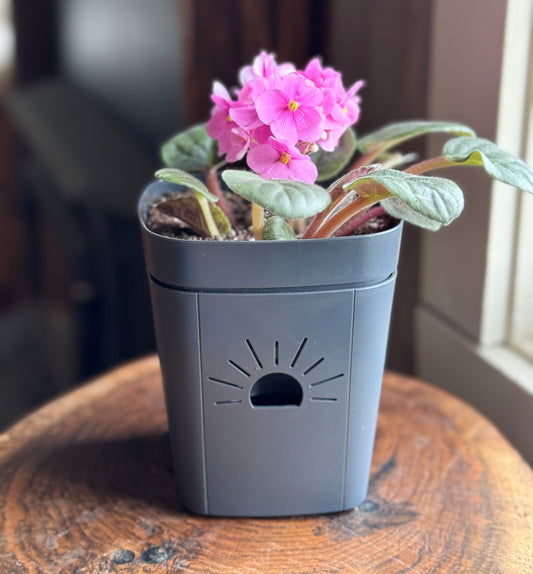
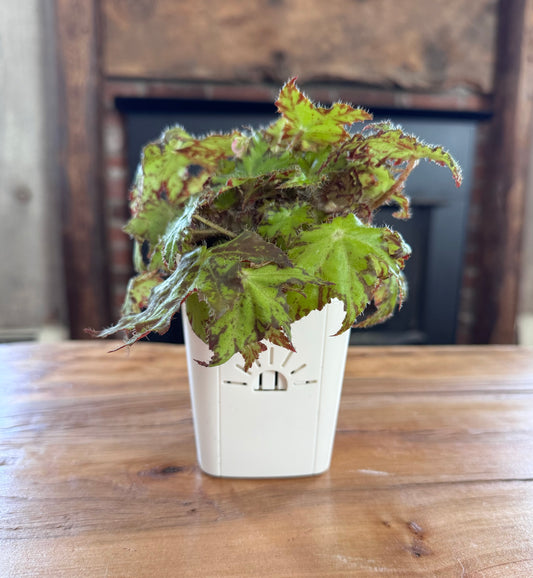

 Verified Buyer
Verified Buyer






